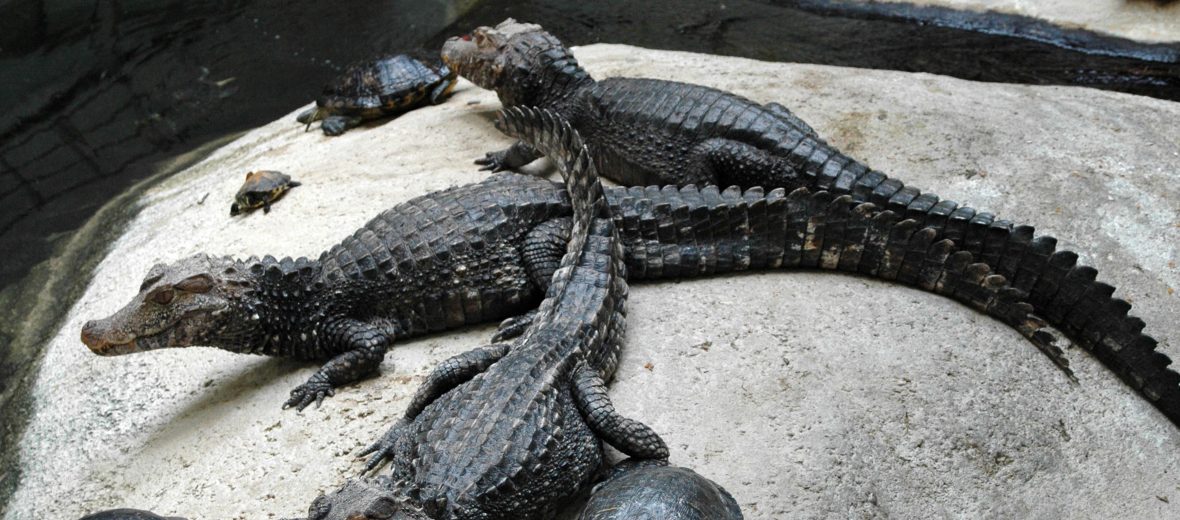
The Cuvier’s dwarf caiman, aka dwarf caiman, Cuvier’s caiman, musky caiman, smooth-fronted caiman, or wedge-head caiman, hails from northern to central South America. They prefer regions with flooded forests near lakes, riverine habitats, fast-moving streams and rivers, & stagnant, nutrient-poor water. Even though they face the threats of habitat loss at the hands of residential and commercial development, mining, and quarrying; hunting; trapping; and overfishing, they are still listed as Least Concern by the IUCN. Their population trend is stable. This article is dedicated to my friend, Eleanor.
First the Stats…
Scientific name: Paleosuchus palpebrosus
Weight: Up to 82 lbs.
Length: Up to 5.2 feet
Lifespan: Up to 60 years
Now on to the Facts!
1.) They were first described by French zoologist Georges Cuvier in 1807.
2.) These crocodilians are nocturnal (active at night).
3.) During the dry season, they have been known to aestivate (a type of hibernation for reptiles) in burrows to keep from overheating.
4.) Communication takes place via postures, smells, movements, touch, and vocalizations.
5.) Adults are found individually and in pairs.
But wait, there’s more on the Cuvier’s dwarf caiman!
6.) A group of caimans is called a congregation, float, bask, or nest.
7.) Juvenile caimans prey on crustaceans, frogs, tadpoles, snails, and beetles. Adult specimens prey on fish, amphibians, rats, mice, birds, crabs, shrimp, mollusks, and other invertebrates.
Did you know…?
The Cuvier’s dwarf caiman is the smallest known New World crocodilian.
8.) These, like other caimans, are polygynous (1 male mates with multiple females).
9.) Females lay a clutch of up to 25 eggs that hatch in up to 90 days.
10.) Hatchlings grow at a rate of up to 4 inches per year, reaching sexual maturity at about 8 years of age.
But wait, there’s still more on the Cuvier’s dwarf caiman!
11.) These caimans, as juveniles, are preyed on by birds of prey, snakes, rats, raccoons, and larger crocodilians. Adults are preyed on by jaguars, boa constrictors, and green anacondas.
12.) They are considered the most prolific of all crocodilians.
Now a Short Cuvier’s Dwarf Caiman Video!
Be sure to share & comment below! Also, check out the Critter Science YouTube channel. Videos added regularly!
Want to suggest a critter for me to write about? Let me know here.
Some source material acquired from: Wikipedia & IUCN
Photo credit: AdInfinitum



